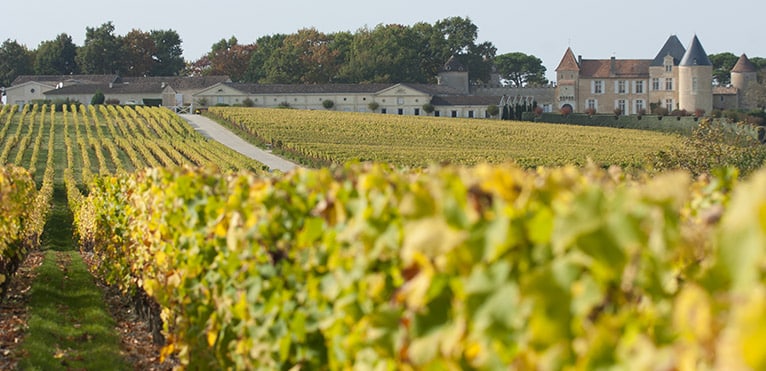
Contents
Considered the world’s greatest sweet white wine, Sauternes is a vineyard of exceptional quality whose history is in part legendary. These wines are produced in the Sauternes region, south of Bordeaux’s left bank.
Sauternes, a legendary vineyard with a mythical history
Most of the history of the Bordeaux vineyards seems to have begun over twenty centuries ago, when the Roman Empire dominated the region. However, as far as Sauternes is concerned, the first traces of vine cultivation date back only to the Middle Ages, and it was not until the 17th century that Dutch merchants began exporting the sweet Sauternes wines they loved to Holland. They also bring a new technique to production. In fact, they propose burning a wick previously soaked in sulfur in the barrels. In this way, fermentation is stopped thanks to the use of sulfur, and residual sugar is higher. Then, supposedly in the 1830s, growers began using noble rot (Botrytis Cinerea).
Two legends surround this new practice: the first is that the owner of Tour Blanche, the wine merchant Focke in 1836, started his harvest late due to bad weather; the second is that the Marquis de Lur-Saluce, owner of Yquem in 1847, returned late from vacation. One of the two men harvested the already “rotten” grapes and made a surprising discovery: this rot brings many benefits to sweet wines by allowing the concentration of sugars in the berries.
Château d’Yquem is the only premier cru supérieur classified in 1855 by Napoleon’s classification, carried out in preparation for the Paris Universal Exhibition.
A microclimate conducive to the development of noble rot
Some forty kilometers south of Bordeaux, the vineyards extend over the communes of Barsac, Bomme, Fargues, Preignac and finally Sauternes, with a cultivated vineyard area of 2,200 hectares.
The AOC benefits from the protection of the surrounding forests, which create a temperate microclimate. It’s bordered by the Ciron and Garonne rivers, one cold and the other warm, inducing the formation of morning fog, at the heart of the development process for noble rot, Botrytis Cinerea.
The relief of Sauternes is shaped by successive croups and terraces. The hilltops are gravelly and composed of clay-limestone subsoil. The various terraces are composed of clay-limestone and gravel soils on the upper terrace, gravel and sand on the middle terrace, and sand on the lower terrace. The appellation’s largest estates are located on gravelly hilltops. The different compositions of these soils offer a variety of advantages: for example, the gravel stores heat during the day and releases it at night, while the clay and limestone allow the vines to root deeply and draw water and minerals from underground, giving the grapes greater richness.
The majority of the appellation’s estates vinify 80% Semillon, making it Sauternes’ flagship grape variety. Next, the grape variety is made up of around 15% Sauvignon Blanc and 5% Muscadelle.
Sauternes is a fruity, floral wine with a beautiful golden color.
Sauternes wines can be recognized by their beautiful golden color, which takes on amber hues with age. They are also characterized by a complex nose that reveals aromas of fruit, flowers and nuts.
Sauternes have notes of citrus, exotic fruits such as passion fruit and pineapple, as well as dried or roasted fruits such as apricot and peach. Floral notes, including acacia and honeysuckle, embellish the whole. Finally, aromas of honey, almonds and hazelnuts complete the bouquet. These are full-bodied, fairly powerful wines that reveal honeyed, fruity flavors on the palate. There’s also a light musky veil and floral notes.
The best vintages of an AOC can be defined as those years in which the appellation produced wines of even more remarkable quality than in traditional years. Within the Sauternes AOC, 1989 and 1990 were classified as vintages of the millennium and 1988 as vintages of the century. 1986, 2001, 2007 and 2009 were exceptional vintages.
Sauternes and foie gras, but not only!
Sauternes is widely renowned for its harmony with foie gras, but there’s much more to it than that. Indeed, Sauternes wines offer great possibilities for pairing with quality dishes, and have a life far beyond the one it is often given to accompany foie-gras at Christmas dinner.
Three possibilities are in good taste. First, play with the harmony between the sweetness of the wine and that of the dish, for example, with duck with peaches or lobster with mango. The second possibility is to create a real contrast with spicy or acidic dishes, so Sauternes goes perfectly with blue-veined cheese or a tangy dessert. Finally, Sauternes can be enjoyed on its own as an aperitif or at the end of a meal.
Sauternes, a prestigious AOC
Château d’Yquem
Château D’Yquem is the only Sauternes AOC estate to be classified as a Premier Cru Supérieur in 1855, when it was in the hands of the Marquis de Lur-Saluces. Ancestral knowledge has been perpetuated with respect for the environment and a perpetual quest for excellence, making this an internationally recognized estate for its excellent vintages.
Clos Haut-Peyraguey
Clos Haut-Peyraguey, owned by Bernard Magrez since 2012, faces Château d’Yquem, and sits on the highest plateau in Bomme. Classified as a Premier Cru Classé in 1885, it has stood the test of time, combining excellent craftsmanship and a unique terroir.